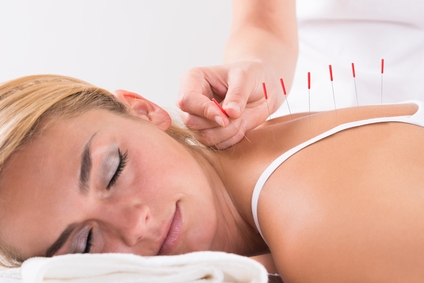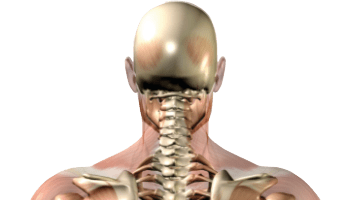Contents
What is Dry Needling?
In recent years, alternative therapies have gained significant popularity in the field of pain management. One such technique that has been gaining attention is dry needling. Often mistaken for acupuncture, dry needling uses thin needles to treat muscular pain, trigger points, and musculoskeletal issues.
It is an invasive therapy which involves the insertion of thin needles into specific areas of the body, known as trigger points. These trigger points are usually tight bands of muscle fibres that can contribute to pain, a reduced range of motion, and impaired muscle function.
Dry needling works by stimulating the trigger points, causing a ‘local twitch response’ (LTR) which often results in the release of tension and an improved blood flow to the affected area. Unlike acupuncture, which is rooted in traditional Chinese medicine and focuses on balancing energy flow, dry needling is based on studies of Western Anatomy as a treatment for musculoskeletal problems.
Benefits of Dry Needling:
- Pain Relief: It can effectively alleviate pain associated with musculoskeletal conditions, such as chronic back pain, neck pain, headaches, and sports injuries. By targeting trigger points, it helps reduce muscle tension, release endorphins, and improve circulation, leading to pain reduction. Read a 2023 study about the strong evidence of pain reduction due to dry needling here.
- Improved Muscle Function: Muscular dysfunction can impair movement and performance. Dry needling can help restore proper muscle function by releasing knots and tightness, improving flexibility, and enhancing muscle activation patterns.
- Enhanced Injury Recovery: It can facilitate the healing process and recovery from injuries. By increasing blood flow, reducing inflammation, and promoting tissue regeneration, it assists in accelerating the body’s natural healing mechanisms.
- Complements Other Treatments: Dry needling can be used in conjunction with other therapies, such as physical therapy and exercise. It can enhance the effectiveness of these treatments by reducing pain and improving muscle function.
Will Dry Needling help my condition?
There are many patients who would benefit from this treatment, particularly if they’re experiencing ongoing pain. Dry needling can often be a more effective treatment than a massage as it targets muscular trigger points directly. Sterile, specialist medical needles are used, meaning the treatment is completely safe.
It is not intended to be a painful treatment and patients should only experience a ‘pinprick’ upon insertion. If the affected area is sore and heavily knotted, patients may also experience a slight cramping sensation. Several of our Osteopaths are professionally trained in this method and may recommend this treatment for you after a consultation.

Safety and Considerations
While dry needling is generally considered safe, it should only be performed by properly trained and licensed healthcare professionals. They possess the knowledge of anatomy, proper needle insertion techniques, and precautions to minimise risks. It is crucial to ensure that the needles used are sterile, single-use, and disposed of appropriately to prevent infections.
Myth Busting
Even if you have never heard of dry needling, the name itself can cause people to form false conclusions about what it is and what is involved. Here, we debunk common myths about dry needling, so that you are well-informed and can decide whether it is the right treatment for you.
Myth 1: Dry needling is the same as Acupuncture
One common myth about dry needling is that it is the same as acupuncture. While both techniques involve the use of thin needles, they are fundamentally different; dry needling focuses on treating muscular trigger points and dysfunction, whereas acupuncture is rooted in traditional Chinese medicine and aims to balance energy flow throughout the body.
Myth 2: Dry Needling is Extremely Painful
There is a misconception that dry needling is a very painful procedure. While it involves the insertion of needles into the skin and muscles, the discomfort experienced during a dry needling session is often minimal. Patients may feel a slight prick or a deep ache, but it is typically well-tolerated. In fact, many individuals report feeling immediate relief and a reduction in pain following a dry needling treatment.
Myth 3: Dry Needling is Risky and Unsafe
Another myth surrounding dry needling is that it is a dangerous and risky therapy. When performed by qualified healthcare professionals who have received proper training and certification, dry needling is generally considered safe. These professionals have a full understanding of anatomy, tissue structures, and proper needle insertion techniques. They also adhere to strict infection control practices by using sterile, single-use needles.
Myth 4: Dry Needling Provides Instant and Permanent Relief
While dry needling can provide immediate relief for some individuals, it is important to note that the response to treatment can vary depending on the individual and the condition being treated. In some cases, multiple sessions may be required to achieve optimal results. Additionally, dry needling is often used alongside other therapies, such as physical therapy and exercise, to address underlying causes and promote long-term recovery.
Myth 5: Dry Needling is Only for Musculoskeletal Pain
While dry needling is commonly used to treat musculoskeletal conditions, such as back pain, neck pain, and sports injuries, it goes beyond just pain management. Dry needling can also be beneficial for addressing movement impairments and aiding in the rehabilitation of various conditions. It is a versatile therapy that can be applied to a wide range of conditions.


